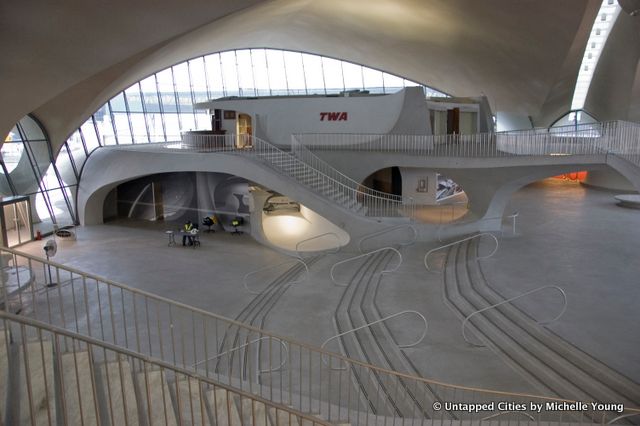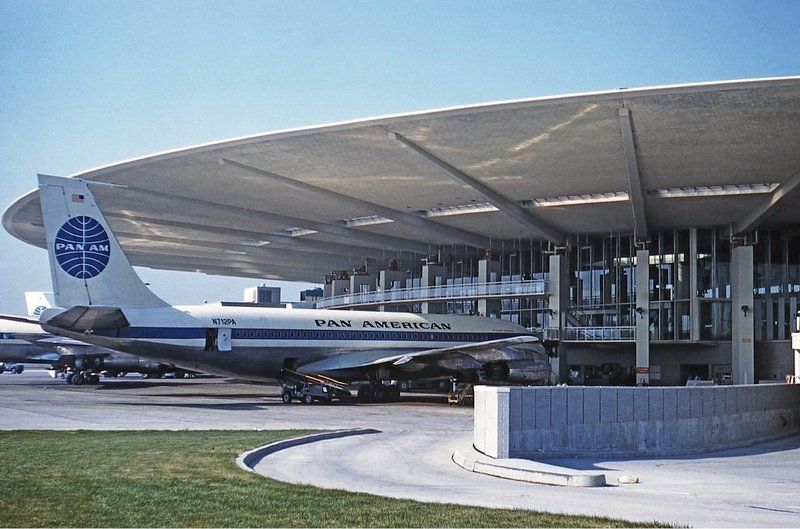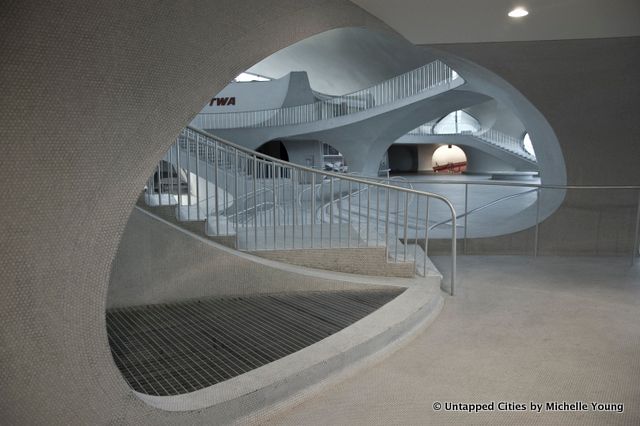A Salvaged Banksy Mural is Now on View in NYC
This unique Banksy mural goes up for auction on May 21st in NYC!



The crown jewel of John F. Kennedy Airport’s architecture is undeniably the landmarked TWA Flight Center, but other Modernist buildings at the airport have not been preserved or will soon be lost. While the public is undeniably drawn by a personal connection to these locations, or the history that has taken place within their walls, the criteria for preservation requires more.
On our behind-the-scenes visit of the TWA Flight Center in 2012, we dubbed it “a cathedral to aviation.” The Eero Saarinen-designed terminal was saved from the wrecking ball in part through the efforts of the National Trust for Historic Preservation. The organization later highlighted the terminal as one of the 24 most inspiring preservation stories in the 24 years of its 11 Most Endangered Places List.
The I.M. Pei-designed Terminal 6 at JFK was not nearly as fortunate. Designed as an exercise in restraint with an aim towards transparency, the architect sought to “create an environment for travelers that was serene, generous, clear, spacious, simple and dignified,” according to Henry N. Cobb, from Pei Cobb Freed & Partners in New York. From its conception, it was never meant to compete with the audaciousness of the TWA Flight Center. This design decision would ultimately lead, in part, to its demolition in 2011.
Most recently, Worldport Terminal has risen to the spotlight after it landed on the 2013 11 Most Endangered Places List. Delta vacated the space for a new extension in Terminal 4 at the end of May. By mid June, Delta was about to commence initial demolition activities and most of the removable interior structures were gone.
Delta wants to use the space as aircraft parking. Preservationists are calling for its reuse, citing its iconic saucer shape architecture and its historic moments (the first home of the Boeing 707 and where The Beatles departed from America in 1964). The preservationists are joined by travelers and New York residents, who recall the former Pan-Am terminal as a symbol of the Jet Age.

Photo by Jon Proctor via Wikimedia Commons
It may seem odd that airline companies themselves, which disappear faster than the architecture they build, can make decisions about historic places. This is not always the case, but at JFK Airport, the Port Authority controls the TWA Flight Center, but Delta is in charge of Worldport.
As companies merge and change hands, the branding necessity of a once-iconic building loses its pertinence. Maintaining these historic buildings, when they sit empty, is a huge expense for the airlines and the Port Authority–$600,000 per year for the I.M. Pei building, at least a million for the TWA Flight Center.

The TWA Flight Center. More photos here.
Looking at the criteria for listing on the National Register of Historic Places, it’s clear that Worldport isn’t a slam dunk for any of the specifications.
First, a listing can be recognized for its “significant contribution to the broad patterns of our history.” This criteria is vague enough that Worldport could go either way. Second, the listing can be recognized for being “associated with the lives of persons significant in our past.” Worldport lacks an internationally acclaimed architect (though, this did not help I.M. Pei’s Terminal 6) and its association with The Beatles is probably not enough. Related is the third criteria–“Properties that are architecturally significant.” Designed by Ives, Turano & Gardner Associated Architects and Walther Prokosch–Worldport’s architects don’t have the same cachet as Eero Saarinen.
Another reason for the lack of institutional support around Worldport relates to the extensive modification of interior spaces by the airlines. One question on the review checklist for National Register Nominations is “Have alterations (if any) been adequately described? Has the evaluation of their impact on the integrity been made?” By all accounts, this terminal never really worked very well, as Paul Goldberger astutely noted in his recent piece in Vanity Fair. Changes were made within a few years after the building was finished to improve functionality.
In the on-going battle between development and preservation at JFK Airport, Modernist architecture is losing out. While progress has been made in the adaptive reuse of TWA Flight Center into a hotel, it seems unlikely that Worldport will be saved. Will there ever be another movement towards iconic architecture in airports? Maybe when form can become compatible with airport functionality again, or when we realize that efficient, generic architecture does not a world-class city make.
Get in touch with the author @untappedmich.
Subscribe to our newsletter